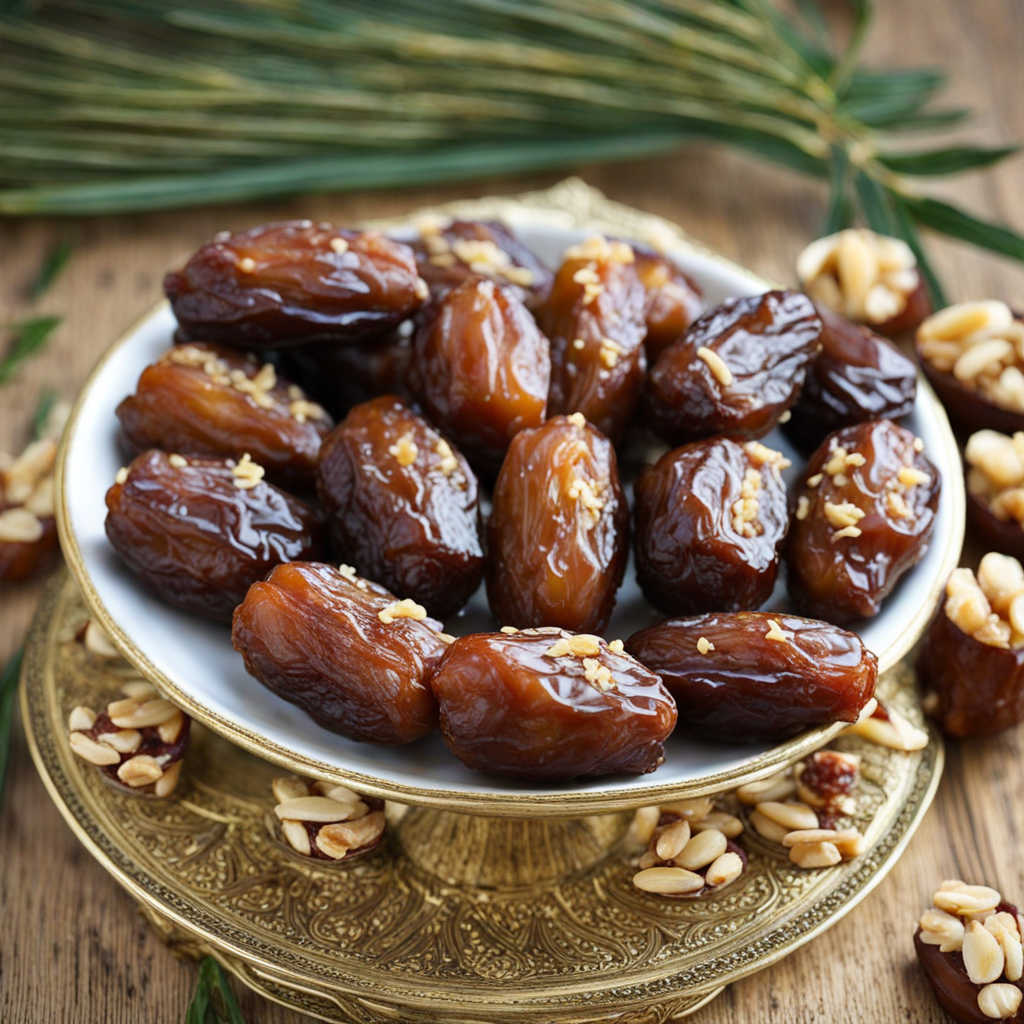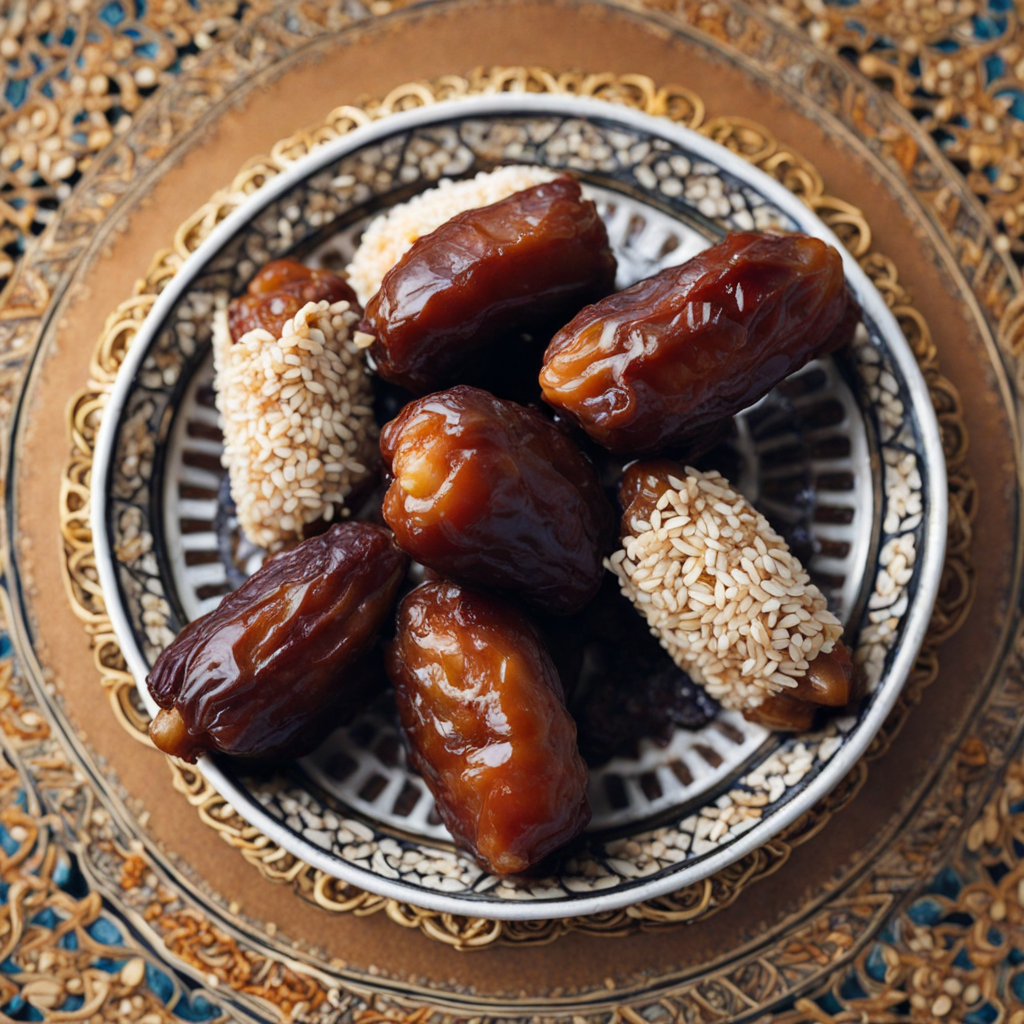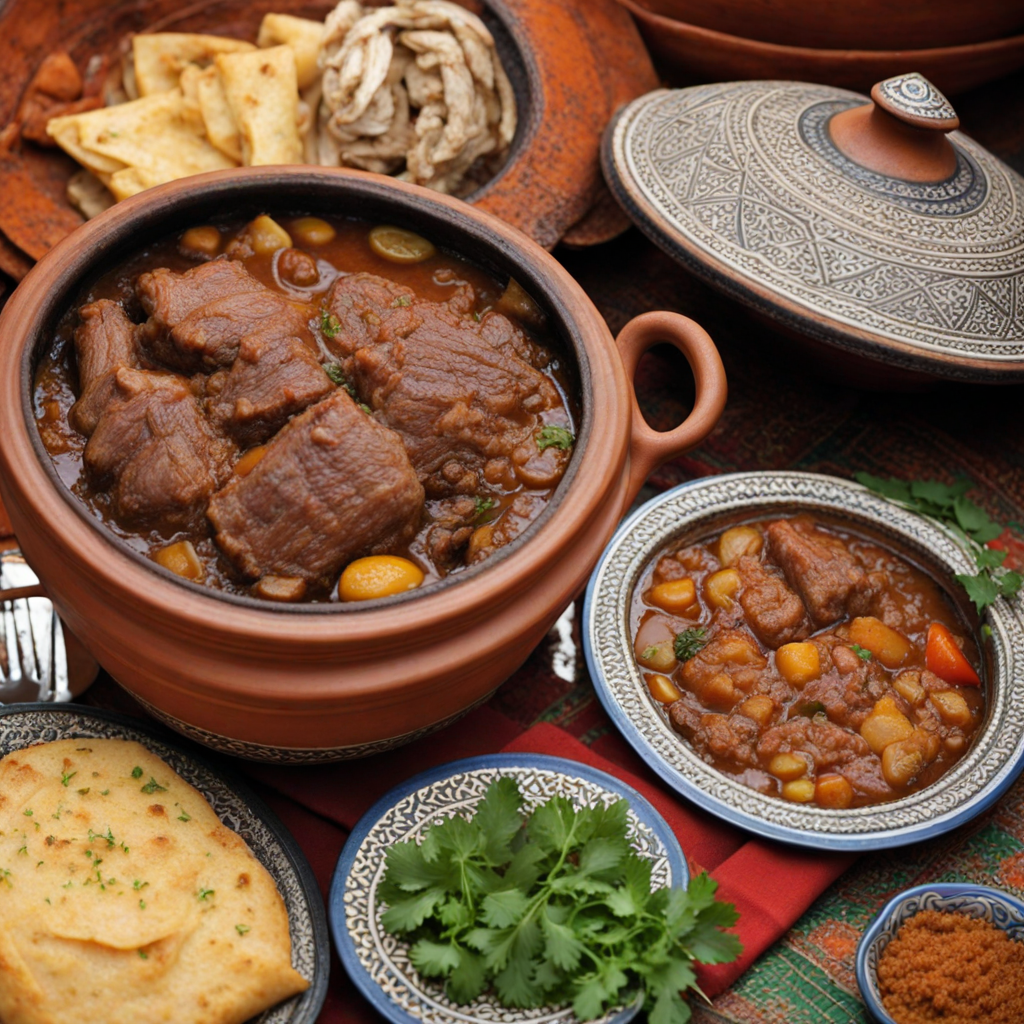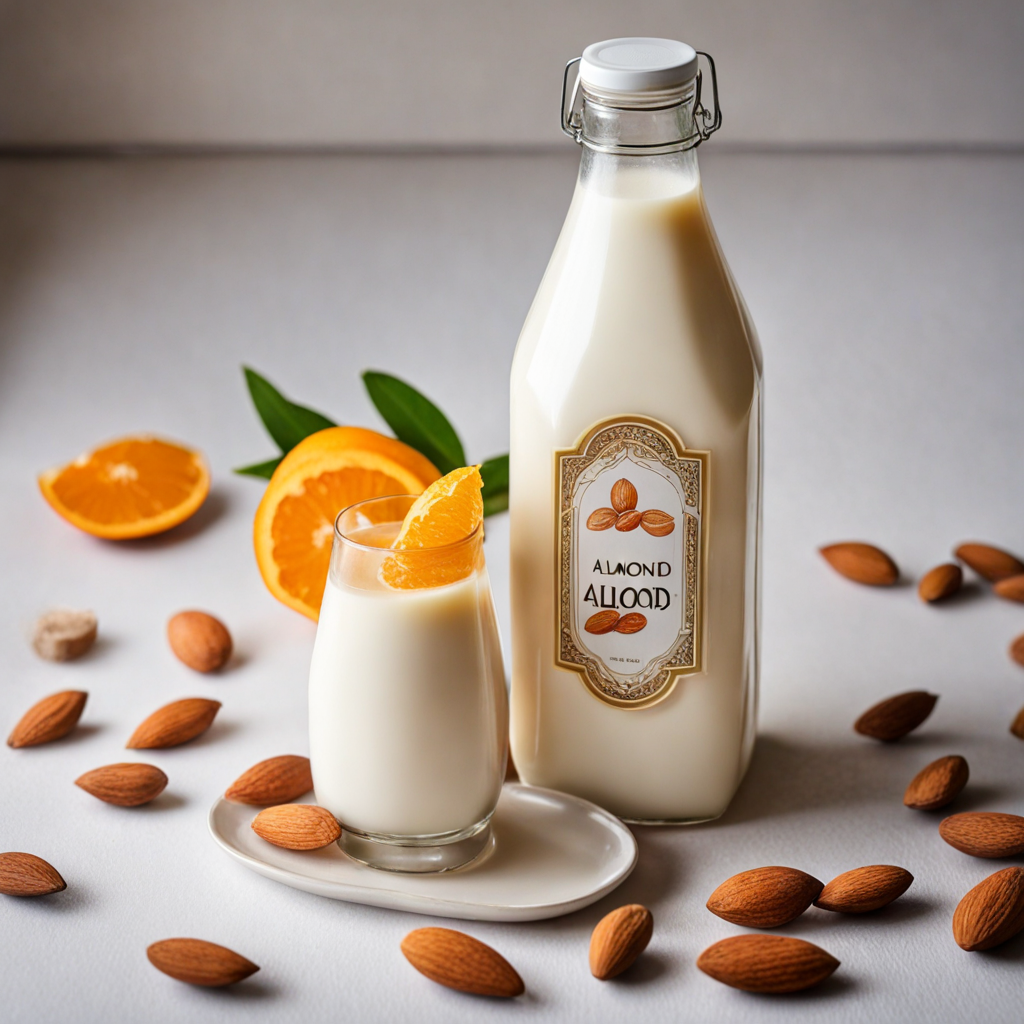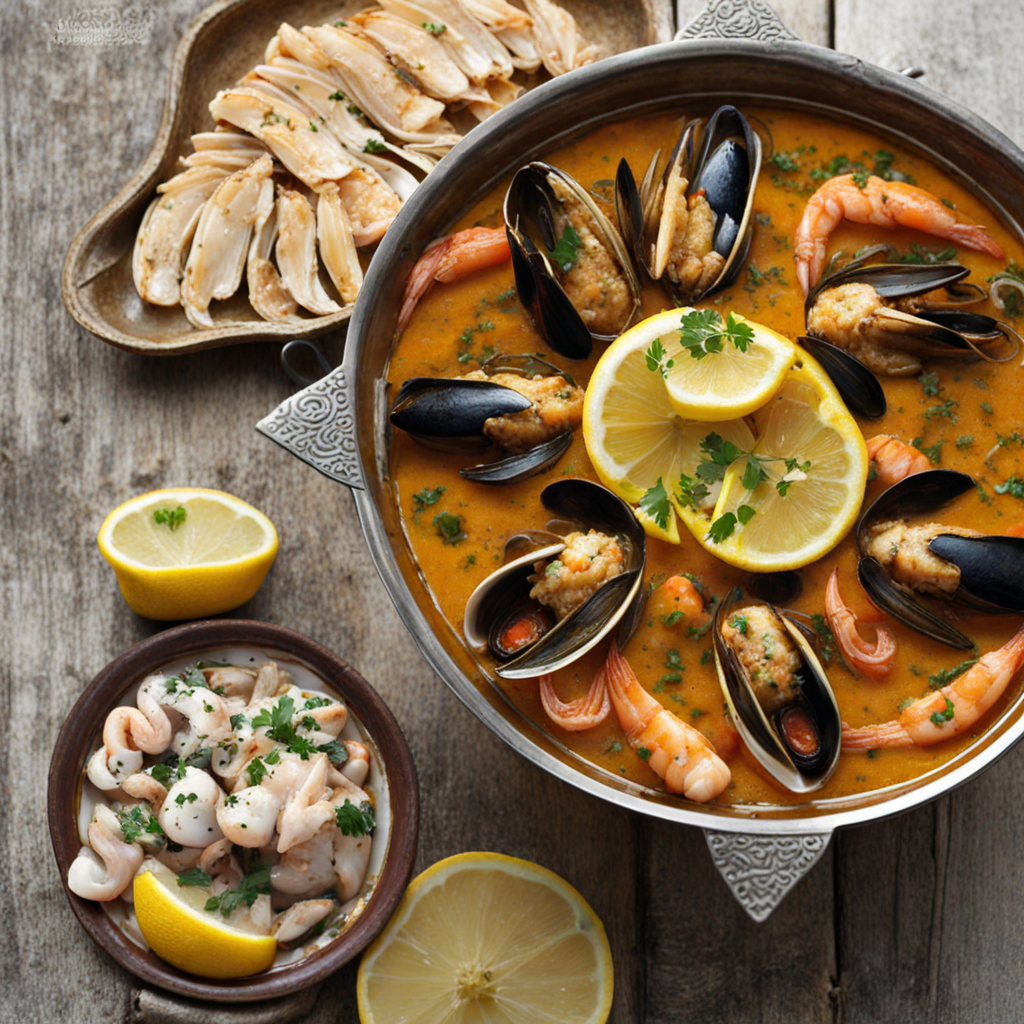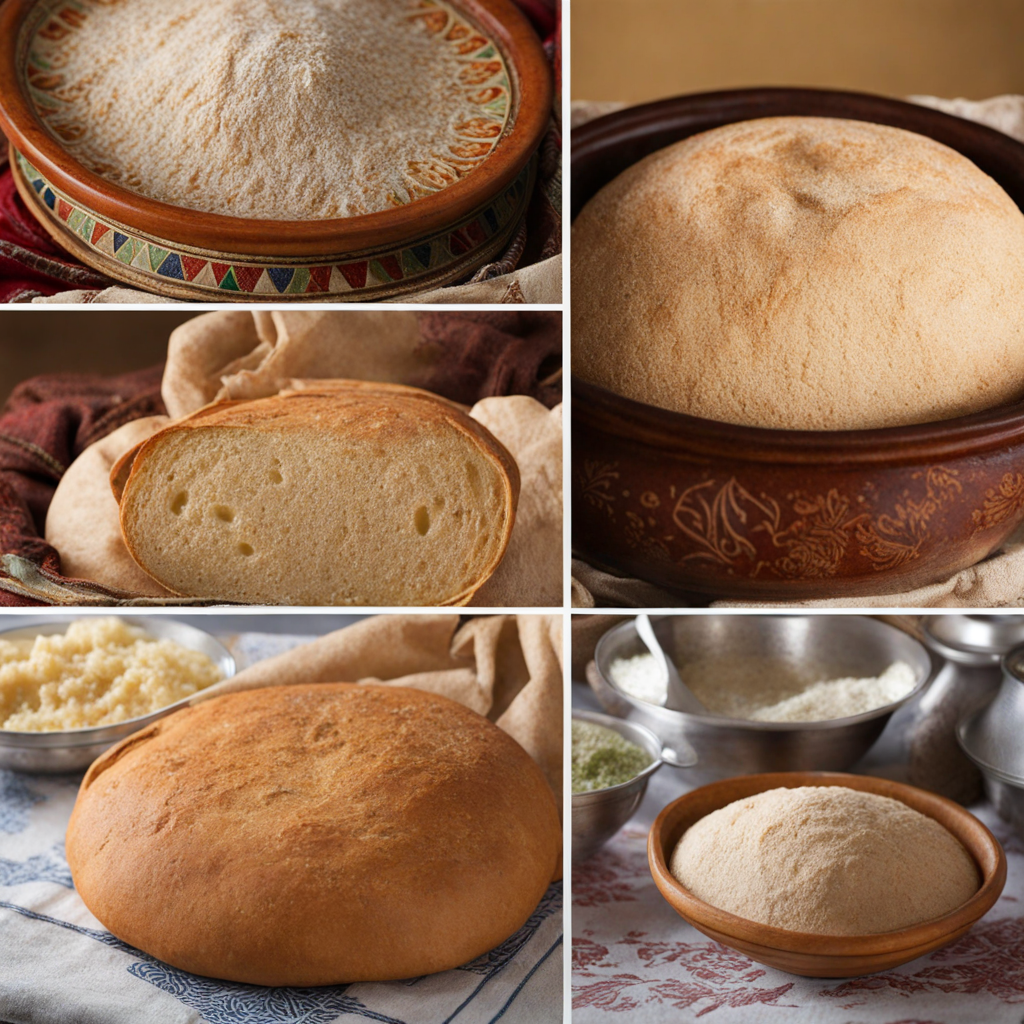Stuffed Dates
Stuffed dates are a delightful Moroccan treat that beautifully combines sweet, chewy dates with a variety of savory and nutty fillings. The base of this dish is the Medjool date, known for its rich, caramel-like flavor and soft texture. These dates are often pitted and then generously filled with an array of ingredients such as creamy goat cheese, toasted almonds, or spiced walnuts. The combination of the natural sweetness from the date and the crunchy, savory filling creates a perfect balance that pleases the palate. Each bite offers a texture contrast, making it a truly indulgent experience. In Morocco, stuffed dates are not just a snack; they are often served during special occasions and celebrations, reflecting the country's rich culinary heritage. The addition of spices like cinnamon or cardamom can elevate the flavors, infusing the dish with warm, aromatic notes that are characteristic of Moroccan cuisine. Sometimes, they are drizzled with a touch of honey or sprinkled with sesame seeds, adding another layer of sweetness and texture to the overall experience. These little delights are not only delicious but also packed with nutrition, making them a wholesome choice for a quick energy boost. The combination of dates and nuts provides a rich source of fiber, healthy fats, and natural sugars, perfect for satisfying hunger while providing essential nutrients. Whether enjoyed as part of a festive spread, an afternoon snack, or a unique addition to a cheese board, stuffed dates from Morocco offer a charming, exotic flavor that invites food lovers to explore the culinary treasures of this vibrant country.
How It Became This Dish
The Enigmatic Delight of تمر محشو (Tamr Mahshou) from Morocco #### Origins of Tamr Mahshou Tamr Mahshou, or stuffed dates, is a culinary gem that embodies the rich cultural tapestry of Morocco. Dates have been cultivated in North Africa for thousands of years, and they hold a significant place in the diets and traditions of various communities across the region. The date palm, known scientifically as *Phoenix dactylifera*, thrives in the arid climates of Morocco, particularly in regions like the Souss Valley and the oasis towns of the south. Historically, dates were not only a staple food source for Berber and Arab populations but were also considered a symbol of prosperity and fertility. The date palm is often referred to as "the tree of life," as it provides not only sustenance but also materials for various crafts, such as baskets and mats. The practice of stuffing dates likely has its roots in ancient culinary traditions, where the natural sweetness of dates was paired with other ingredients to enhance flavor and texture. The earliest mentions of stuffed dates can be traced back to the medieval Islamic world, where culinary practices were profoundly influenced by the trade routes that connected the East and West. The fusion of flavors and ingredients from diverse cultures contributed to the evolution of Moroccan cuisine, which is characterized by its use of spices, fruits, and nuts. As the centuries passed, stuffed dates became a popular delicacy, particularly during festive occasions and religious celebrations. #### Cultural Significance In Moroccan culture, food is more than just sustenance; it is a means of fostering community and celebrating heritage. Tamr Mahshou is often prepared during special occasions such as Ramadan, weddings, and family gatherings. During Ramadan, the holy month of fasting, dates hold particular significance as they are traditionally the first food consumed to break the fast at sunset. The sweetness of dates symbolizes the joy of reuniting with family and friends after a day of reflection and prayer. The act of preparing Tamr Mahshou is often a communal effort, with family members gathering to share recipes, stories, and laughter. This process strengthens familial bonds and preserves culinary traditions passed down through generations. Typically, the stuffing options for dates vary widely, reflecting Morocco's diverse culinary influences. Common fillings include almonds, walnuts, or pistachios, often mixed with spices like cinnamon or cardamom to enhance the flavor profile. Some variations may even include the addition of honey or orange blossom water, creating a delightful balance of sweetness and richness. Tamr Mahshou is not only a treat reserved for celebrations; it is also a symbol of hospitality. In Moroccan culture, offering food to guests is a gesture of welcome and respect. Stuffed dates are often served alongside mint tea, further emphasizing the importance of sharing and generosity. #### Development Over Time As Moroccan cuisine developed over the centuries, so too did the preparation and presentation of Tamr Mahshou. In the early 20th century, the rise of globalization and culinary tourism introduced new ingredients and techniques to traditional recipes. Chefs began experimenting with various fillings, incorporating dried fruits, cheese, and even chocolate into the mix. This evolution reflects the dynamic nature of Moroccan cuisine, which continues to adapt and innovate while honoring its roots. The increasing popularity of Moroccan cuisine on the global stage has also led to a renewed interest in Tamr Mahshou. As food enthusiasts and travelers flock to Morocco, they seek out authentic experiences, including cooking classes that teach the art of making stuffed dates. This trend has prompted local artisans and chefs to refine their craft, creating unique versions of this beloved dish that cater to both traditional and contemporary palates. Modern interpretations of Tamr Mahshou often highlight the use of organic and locally sourced ingredients, aligning with the global movement towards sustainability and health-conscious eating. Health-conscious consumers are increasingly drawn to the nutritional benefits of dates, which are rich in fiber, vitamins, and minerals. The resurgence of interest in traditional foods has led to a greater appreciation for the craftsmanship involved in preparing Tamr Mahshou, with chefs emphasizing quality over quantity. Moreover, the integration of Tamr Mahshou into social media culture cannot be overlooked. With platforms like Instagram and TikTok showcasing vibrant food photography and culinary tutorials, stuffed dates have garnered a new audience eager to recreate Moroccan dishes in their own kitchens. This digital exposure has not only elevated the dish's status but has also encouraged cross-cultural exchanges, allowing people around the world to appreciate the flavors and traditions of Moroccan cuisine. #### Conclusion Tamr Mahshou is more than just a delicious treat; it is a reflection of Morocco's rich history, cultural significance, and culinary evolution. From its ancient origins as a staple food to its contemporary status as a beloved delicacy, stuffed dates embody the spirit of Moroccan hospitality and community. As the world becomes increasingly interconnected, Tamr Mahshou serves as a delicious reminder of the importance of sharing food, culture, and stories across borders. Through its journey from the sun-soaked oases of Morocco to the tables of homes around the globe, Tamr Mahshou continues to delight palates and foster connections between people. It stands as a testament to the power of food to transcend time and geography, weaving together the threads of tradition and innovation into a tapestry of flavor and experience. Whether enjoyed during a festive gathering or as a simple treat, Tamr Mahshou remains a cherished symbol of Moroccan heritage and culinary artistry.
You may like
Discover local flavors from Morocco


